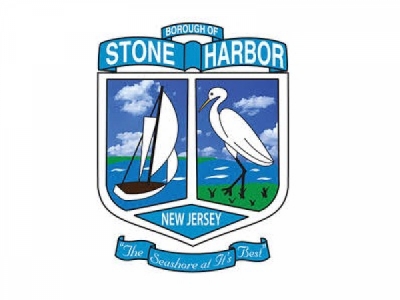
Posted on September 15, 2016
The Stone Harbor Borough Council’s meeting room drew about 50 residents for a Sept. 10 presentation on the new dredging plan.
The borough’s contractor for the project, Sevenson Environmental Services, filled two hours with a review of the less-than-successful phase one and the plans for completing the work in phase two this fall.
Sevenson began dredging for phase one at the end of November 2015. That phase of the project, based on a hydraulic approach for dredging and the use of a geo tube technology for dewatering at the closed marina on 80th Street, was plagued with problems and was twice shut down by the state Department of Environmental Protection.
At the presentation, Sevenson representatives admitted that “the approach just did not work.”
The goal for the dredging project is to remove 100,000 cubic yards of sediment from lagoons and waterways. Even with the first year of operations completed, over 80 percent of the goal remains to be achieved.
The plans for phase two, which Sevenson hopes will allow it to complete the work and “be out of here by Christmas,” will use a wholly different mechanical dredging approach which includes the use of portland cement mixed with the sediment to shorten the dewatering time.
Why the Marina?
The use of the Municipal Marina parking lot as the site for dewatering has been unpopular with many borough residents. Those living in proximity to the marina have raised objections based on dangers to which, they believe, the project exposes their properties. They also have cited the project’s noise and inconvenience of the work which effectively denies them peaceful use of their homes.
Other residents have complained of the loss of the marina for their boats and the closed boat ramp.
The presentation started with a review of the history of the dredging efforts dating to the previous effort in 2005. At that time the use of land at the Point caused serious problems and forced a relocation of sediment while the project was still underway.
Those difficulties left the borough with very few choices for sediment removal.
The audience heard of capacity problems at the contained disposal facility (CDF), and the unsuccessful attempts to find excess capacity at Avalon’s CDF.
They were also told of a rumored ancient burial site on King Nummy Island that would have required historical archeological investigations before the island could be used. Also, there were environmental barriers to open water or wetlands disposal.
The point of perhaps 20 minutes of this part of the presentation was to defend the use of the borough-owned marina lot as the only viable location for dewatering and trucking sediment off the island to landfills willing to accept it.
Phase II Plan
The proposed mechanical dredging approach offers some potential benefits. The process will use barge-based excavators to remove sediment and load it onto 100-cubic-yard scows for transport and off-loading at the containment site.
The material, amended with the Portland cement, will be staged in bins for 24-hour periods before moving to trucks for disposal.
The approach allows for a much shorter dewatering time, more continuous disposal operations, and significantly less water to manage at the containment site.
With approximately 82,000 cubic yards of sediment to remove in this phase of the project, the logistics remain daunting to contemplate.
The scows carrying the sediment to the site hold 100 cubic yards while the trucks removing the dried material from the island carry about 15 cubic yards, according to Sevenson.
Do the math and the project requires nearly 1,000 scow trips and well over 5,000 truck trips if one counts one-way only.
The plan calls for a strict containment operation at the marina site and Sevenson described the sealed nature of the containment area aimed at not allowing any untreated water to escape.
Questioned about potential storms, the contractor maintained that with two or three days warning they could get all staged sediment off-loaded from the site before a weather event.
For residents living around the marina, the only good news was probably that the new approach holds out the hope that the project will be completed this year with no phase three.
There were also assurances that the borough will seek other options for sediment management in the future hoping not to have to use the marina again for this purpose.
Sevenson promised to work with its contractors to minimize some of the problems that plagued residents of the area during phase one. Neighbors of the marina area pointed to noise issues and serious parking concerns last year.
Uncertainties
Sevenson is mobilizing at its own risk in the hope that the permit modifications will be approved, and dredging can begin in the next few weeks.
The plan presented calls for beginning the dredging of South Basin as early as Sept. 20. No assurances could be given that the necessary permits would be approved in time.
Sevenson did say that the DEP has orally stated that it will not require public hearings, but that could change, and hearings would push the schedule out significantly.
At present, both the DEP and the Army Corps of Engineers have open comment periods which will soon close.
Sevenson will then formally respond to comments before the agencies make final decisions on permits.
Source: Cape May County Herald.com





